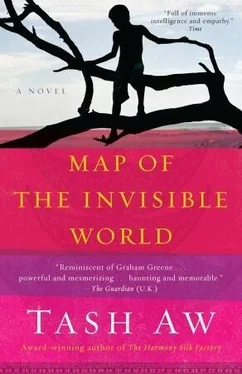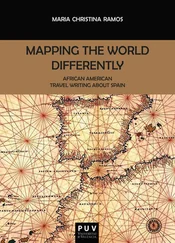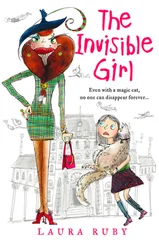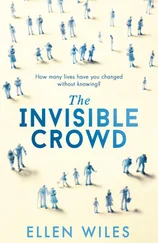“Z. Zubaidah,” Margaret called out as the girl walked away. “We really need your help. Do you know where Din is right now?”
Z stopped and half-turned to face them again. She was still frowning but her face seemed to have softened and she looked puzzled.
She shook her head; her hair brushed against her jaw, making her look very young. “I don’t know where he is. I would tell you if I did. I can tell he is very important to you.”
“Don’t you have any idea?” Mick said. “Please try and think. Did he mention anything to you about where he was going, what his immediate plans were?”
Z’s frown deepened; she shook her head. “No, sorry. I really must go. I’m very late. Good-bye.” She took a few quick steps and turned once more. “Just for the record,” she added, “Din and I were never involved in that way . I don’t have time for silly love affairs.”
“You’re young,” Margaret said. “All young people have time for silly love affairs.”
“Not me — I have more important things to do than chase after love,” Z said, half-smiling. She turned to leave, walking fast; when she reached the end of the shaded walkway she broke into a run, kicking up dust in the hazy afternoon sunlight.
T he studio was small but light and clean, built onto the side of a house overlooking the river valley. One wall had been more or less removed, exposing the room to the full view of the ravine that fell away steeply to the clean, dark waters below. In the distance, the hills formed an undulating ridge covered in bamboo. Against this backdrop Karl had built a platform; and it was on this flimsy wooden dais that his model now posed. She was a glum-looking girl of about eighteen or nineteen, sitting with her legs folded, idly drawing invisible circles on the floor with her index finger.
“What do you think? Do you like it?” Karl said to Margaret without looking at her. His eyes shifted languidly between canvas and model. He painted in short, jerky strokes, his wrist flicking rapidly in vertical movements or dabbing delicately at the canvas.
“Um, yes.” Margaret hesitated. The painting was a mess, she thought: splotches of vivid color that bled into each other, violent green hills in the background and the head of a long-necked woman who bore little resemblance to the model.
“No, not the painting,” said Karl, noticing the direction of Margaret’s gaze, “my new studio. I couldn’t have found it without your help.”
Margaret shrugged. “I didn’t do very much. I just pointed you in the right direction, that’s all. There are lots of painters around Sayan, and I knew you’d feel at home.”
“I feel more than just at home,” he replied, pausing to turn to her, paintbrush poised featherlike in midair. She had never before seen a face so clear, so animated. “I feel this is where I was supposed to be all my life, my rightful place in the universe.”
“I hope you’re not going to say ‘spiritual home.’ That’s what they all say.”
“The light,” he continued, as if she had not spoken, “is perfect. The vegetation, the temples — everywhere I look there is something my eye is not accustomed to. I feel like Gauguin must have felt when his ship first arrived in Tahiti.”
Margaret peered over his shoulder and examined the painting. There was certainly a lot of Gauguin in it: the vivid patches of color; the doe-eyed girl whose bodiless head already bore the obligatory frangipani flower behind the ear; her demure, enigmatic regard, looking yet not looking at the beholder, inviting yet repelling the Westerner (no, Margaret thought: the Western man; she herself was neither drawn nor repulsed, merely bored). Margaret remembered her mother showing her picture books with color plates of Gauguin’s paintings. She was twelve at the time, and her mother had embarked on a lengthy lecture on the “coming of age” of young girls in Tahiti. (“This is what some mothers might call the Birds and the Bees, or Facts of Life, or other nonsense,” her mother had said. “ I am going to tell you what happens to the clitorises of girls your age in places not too far from here — and I don’t expect you to be shocked.”) The long and short of it was that Margaret had thought Gauguin a terrible painter, amateurish and unhealthily drawn to sexual matters — not in a romantic or dashing way, but in a rather dull, predictable manner. Even at the age of twelve she didn’t like what she saw. She did not find it the least bit surprising when her mother told her that Gauguin had died of syphilis.
“Look at her,” Karl said, “isn’t she perfect? So wonderful to paint. Her name is Nyoman. Isn’t that the most wonderful name? Nyo-man. It sounds like something rare and delicate.”
“It just means ‘third child.’ Every third Balinese you meet is called Nyoman, male or female. Where did you find her?”
“In the village. She was sitting by the road with a group of women — it was just like Gauguin — and they waved at me and wanted me to stop and chat. I was overwhelmed by their openness, the warmth they offered to a complete stranger — but also a bit sad, because I knew I would never be able to capture how I felt on canvas. I thought I should try, nonetheless, and therefore I asked Nyoman if she would come and pose for me. Fortunately, she agreed. I’m having trouble getting her skin tone the color it should be. Look. It should be clearer than that. But I think I have the form of her body just about right. It’s quite unlike painting Occidentals.”
Margaret looked at the outline of the body on the canvas, the flesh yet to be filled in; it was slinky and lithe. The girl herself was, thought Margaret, quite plump and already running to fat, as was quite often the case with girls in this area, where the harvests were dependable and the droughts rarely severe. Above her sarong her breasts were full and heavy, her arms stout, almost muscular. This Nyoman girl was only a few years older than her, but she was already a woman — a woman with an identifiably womanly body, ready to bear children. Margaret folded her arms across her chest; she felt like a flat-chested, malnourished urchin, a tiny young thing.
“Look at the grace with which she moves,” Karl continued. “It’s as if she will forever be a child, even though she’s already a woman.”
“She’s only eighteen, you know,” Margaret said, arms still folded tightly across her chest.
“I’d forgotten how effortless their movements are here in the Indies,” said Karl, as if Margaret had not spoken. “We Occidentals lost this sense a long time ago — centuries, maybe even millennia. We lost touch with the primitive, unspoiled parts of ourselves, so we no longer know what it is to be innocent and childlike. Look at Nyoman, for example, look at her elegance.”
Aware that she was being discussed (even an untuned Balinese ear could understand Karl’s maceration of her name), Nyoman raised herself slightly and shifted her weight to adjust her sarong. She looked up at Margaret with bored, bloodshot eyes and broke into a rich, soupy cough; she turned her head and spat a thick glob of phlegm into the bushes beyond the platform, projecting it so cleanly and powerfully that it rustled the foliage.
“Elegant. That is the word, I think,” Karl said, frowning in concentration as he stirred a pool of paint on his palette; it was the color of mud after a heavy rain. “Life in Europe is no longer elegant. It is no longer sensitive or welcoming or warm. No, we are no longer innocent. We have had our childhood snatched away from us and now we are old, argumentative men, decaying and ready to go to war at any moment.”
“Why do you always paint women like that?”
Читать дальше
Конец ознакомительного отрывка
Купить книгу












